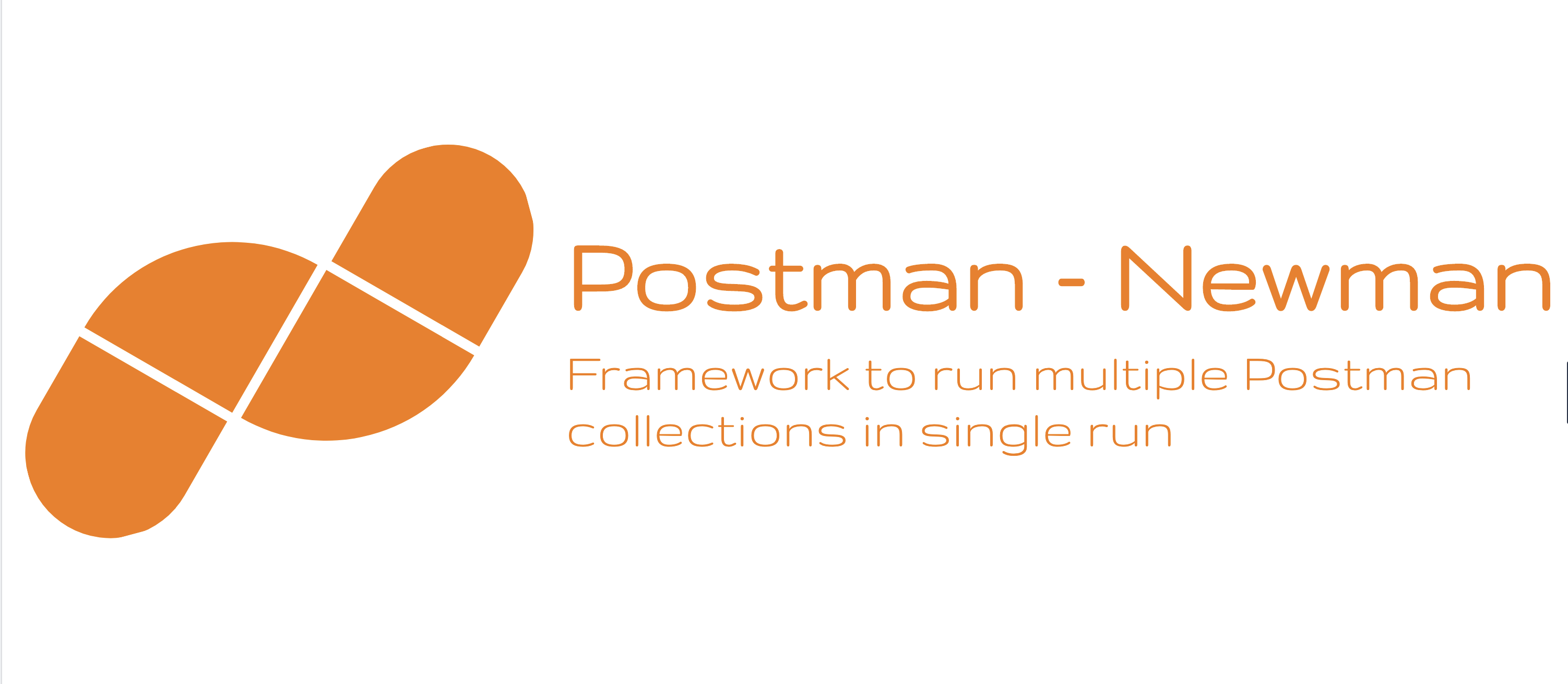Postman - Newman Framework
A framework to run multiple postman collections in single run by leveraging newman library.

Prevailing Problem
If we need to run multiple postman collections or single postman collections with multiple environments, then it becomes we need to have multiple command lines as,
newman run <file1.json>
newman run <file2.json> -e <env1.json>
newman run <file2.json> -e <env2.json>
...
Also, if we need to have multiple reports along with this run, we need to specify those each of these command line run along with the folder in which the reports should be generated as,
newman run <file1.json> --reporters cli,html,allure --reporter-html-export htmlOutput.html --reporter-allure-export <allure-results-out-dir>
newman run <file2.json> -e <env1.json> --reporters cli,html,allure --reporter-html-export htmlOutput.html --reporter-allure-export <allure-results-out-dir>
newman run <file2.json> -e <env2.json> --reporters cli,html,allure --reporter-html-export htmlOutput.html --reporter-allure-export <allure-results-out-dir>
So, as we can see the params that we are passing in the commandline keeps on increasing and its much difficult to consolidate and have a single report for multiple newman run. In Python or in Ruby test runs we have profiles that we can specify during a run which will have most of the static commandline params.
Aim
This framework is aimed at resolving the above particular issue along with allure reports integration which can be easily integrated with jenkins.
Supports
- Multiple collections run in single shot
- Allure reports along with newman’s default CLI, HTML & JSON
- Jenkins Integration
- Docker Execution
Pending
- Need to handle tests with iteration data.
Setup
- Clone this repository
- Navigate to the cloned folder
- Install node and npm using
brew install node - Install the dependencies with respect to this project by
npm install
To Run the tests
To make the command line run options easier, added common run options as scripts in package.json file.
For a simple run of all the feature files in normal mode without any video recording, try
npm run test -- <Feed_file_which_contains_input_collections>
Allure
To open the allure results,
npm run serve-allure
Along with allure reports, newman’s default CLI, HTML and JSON reports are added which can be found at reports/ path. For sophesticated classification, reports for each collection is isolated with different name. If needed JSON and HTML files can be pushed to S3 for further processing or to have a record.
To clear the all the report files from results directory,
npm run clean-report
Jenkins Integration with Docker images
Get any of the linux with cypress docker image as the slaves in jenkins and use the same for executing the UI automation with this framework (Sample docker image - https://hub.docker.com/r/postman/newman/). From the jenkins bash Execute the following to get the testcases to run,
#!/bin/bash -l
npm list
ls
cd <path_to_the_project>
npm install
npm run test -- <feed_file> <or custom run option>
In Jenkins pipeline, try to add the following snippet to execute the tests,
pipeline {
agent { docker { image 'postman/newman' } }
stages {
stage('build') {
steps {
sh 'cd project/'
sh 'npm install'
sh 'npm run test -- <feed_file>' # or custom methods
}
}
}
}
Breakdown in to testcases
Feed files
The feed file is the core structure for this framework to function. In the feed file, one has to specify the collections and environment json files path or the url in the array format inside runs variable like,
{
"runs":[
{
"collection": "./collections/test_scripts.postman_collection.json"
},
{
"collection": "./collections/file_upload_collection.postman_collection.json",
"environment": "./environment/test_environment.json"
}
]
}
If we have only collections that need to be run as part of the test, then have collection alone. If we have collection and environment files, then we need to specify both collection and environment in json format.
When we initiate the tests, the runs array will be iterated and all the tests will be run using newman package.
Ideally we should have the postman collection link as the feed file input, this gives us the leverage of modifying the tests via postman without touching the core framework. The ideal feed file will be,
{
"runs":[
{
"collection": "https://www.getpostman.com/collections/57c3cfef239jeijw39d93"
},
{
"collection": "https://www.getpostman.com/collections/57c3cfef239jeijwew282",
"environment": "./environment/test_environment.json"
}
]
}
Once the feed file is prepared, one can directly trigger the test by,
npm run test -- <Feed_file_which_contains_input_collections>
Folder structure
If we need to have the collections inside the folder, then its advisible to have the collections in collections folder. All the environment files should be kept under environment folder. If we have multiple feed files to run at different stage of development or for different microservices, then have all the feed files under feed folder.
Built With
- Newman - Automation core framework to run Postman collections.
- Newman-Allure - For Detailed reporting.
Contributing
- Clone the repo!
- Create your feature branch:
git checkout -b my-new-feature - Commit your changes:
git commit -am 'Add some feature' - Push to the branch:
git push origin my-new-feature - Create a pull request.
Please read CONTRIBUTING.md for details on code of conduct, and the process for submitting pull requests.
Authors
License
This project is licensed under the GNU GPL-3.0 License - see the LICENSE file for details
Acknowledgments
- To all the open source contributors whose code has been referred in this project.




